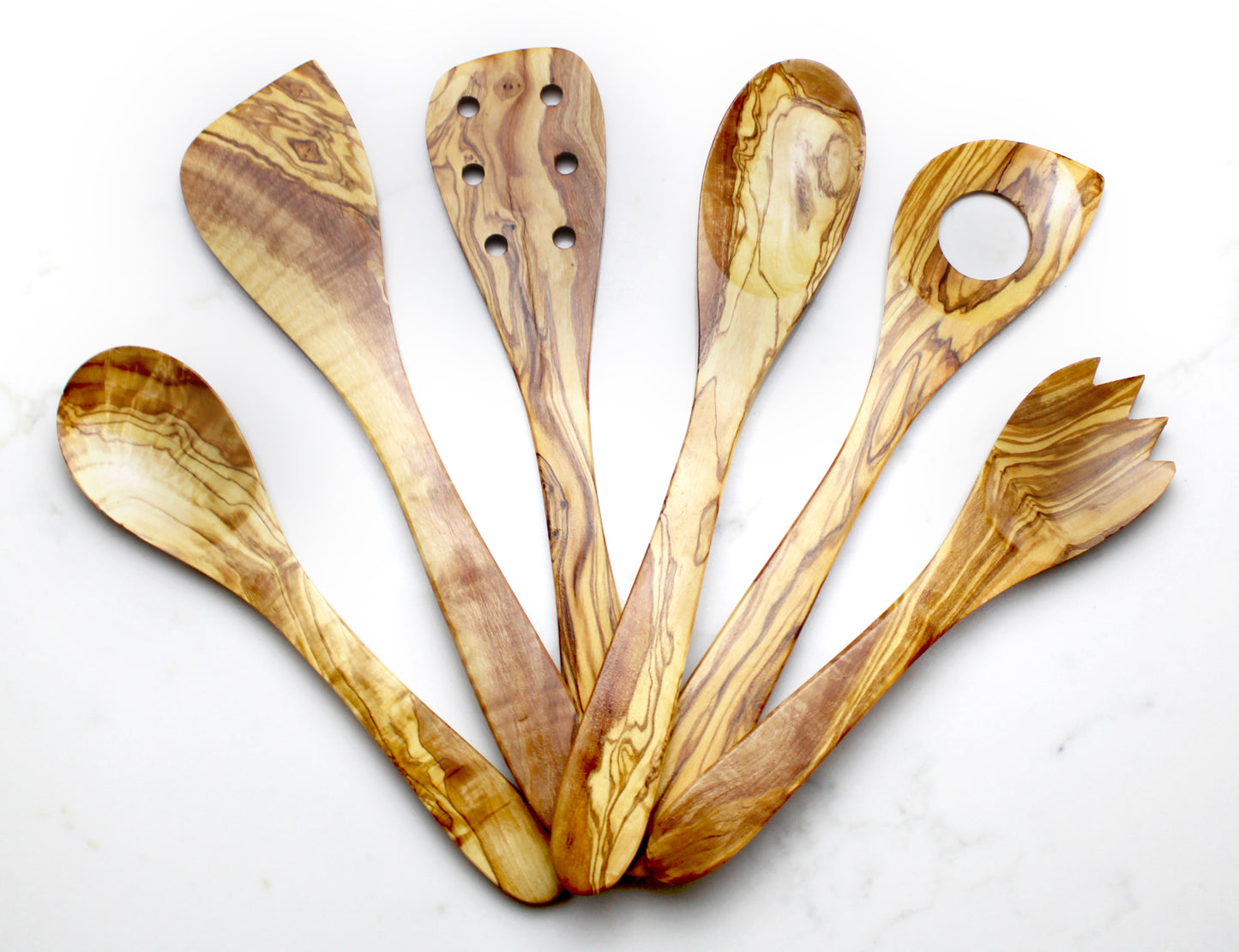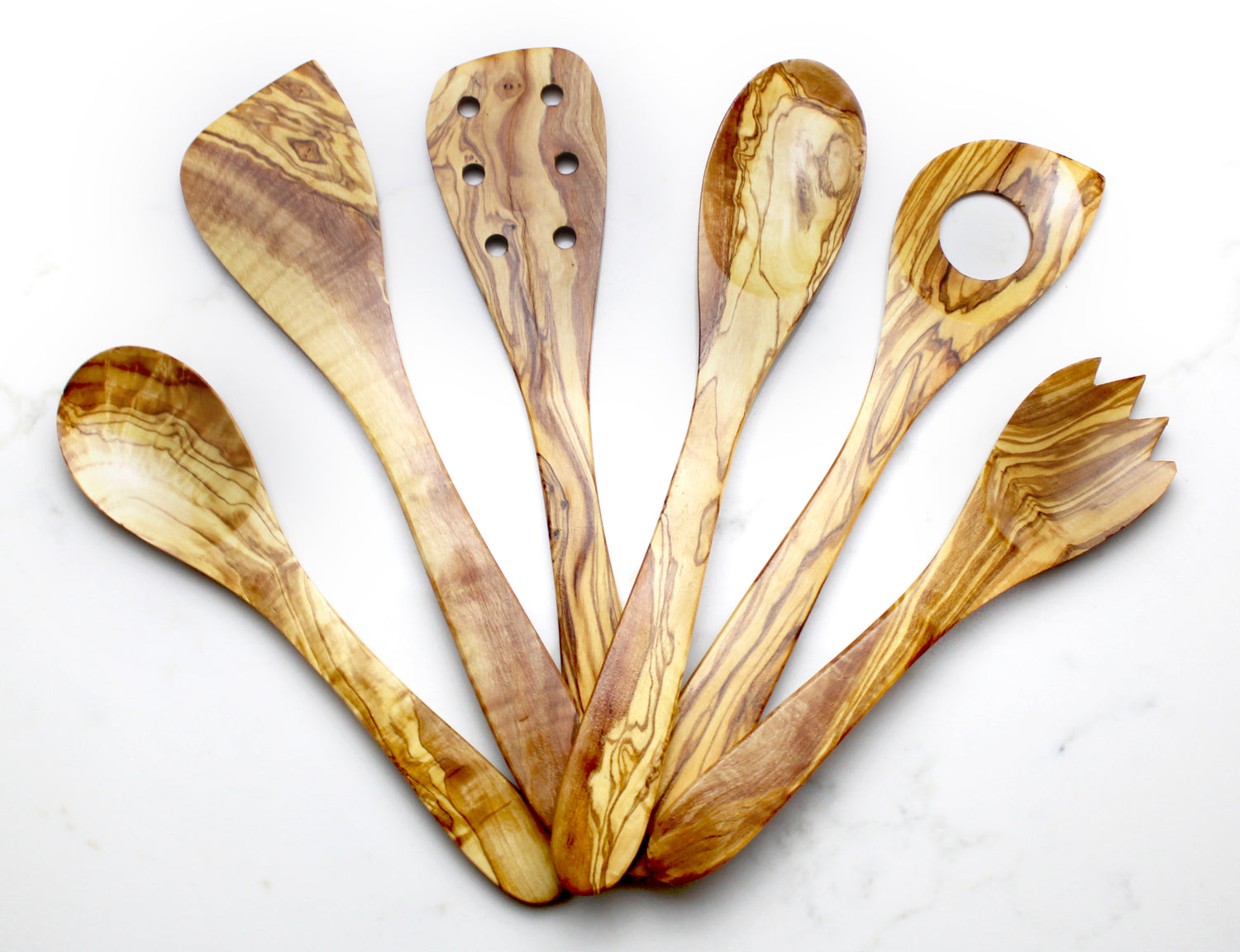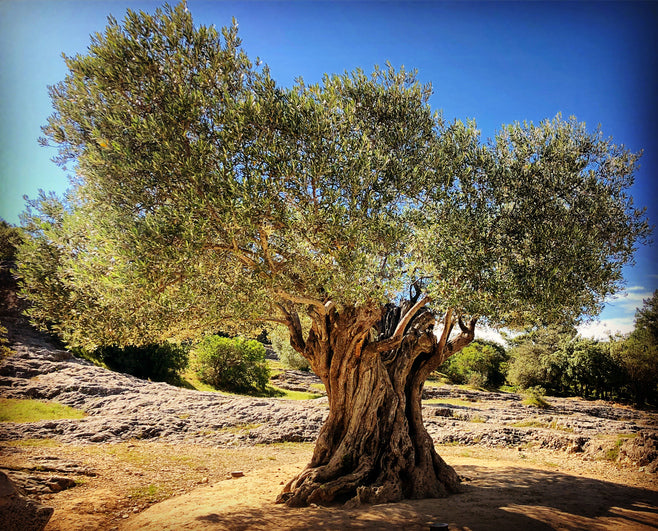Olive Wood-Centuries in the Making
These handmade pieces, carved out of a single piece of wood, are unique, beautiful, and durable. Olive wood utensils have been used for thousands of years in food preparation, as this dense hardwood’s organic oil content makes it less susceptible to bacteria, stains, and odors. The natural grains and rich color of olive wood add beauty to the artistry occurring in the professional kitchen.

Premium Gift Packaging
Gift ready olive wood utensils packaged in draw string burlap bag and packaged in premium gift box.

Wooden Forks and Spoons
Set of Six Olive Wood Utensils
Share

For the Professional Kitchen


Our Mission
Olive wood is a sustainable renewable green resource. Its use diminishes dependence upon non-organic materials. It stands as an archetype of bringing nature’s beauty into our daily life without having to damage our environment.
The Olive Tree's History
Olea Europaea
The olive tree originated in the eastern Mediterranean, parts of Asia Minor, and the Southern Caspian Sea. The gnarled trunk growth, attractive shape, and distinctive appearance make the olive tree one of the most easily recognized plants in the world. The Olea europaea is most well-known for its adaptable wood and exquisite olive fruit, which may be refined into rich olive oil, a staple of traditional cuisine in the tree's native countries. Its leaves are also utilized in traditional herbal therapy, particularly in the Mediterranean area, to prevent and cure numerous ailments. The boughs of an Olea europaea are recognized as a sign of peace.
Olea Capensis
Also known as the black ironwood, Olea capensis is a species of African tree in the olive family Oleaceae. The black ironwood is a bushy shrub that is usually around 13 feet tall, although some bigger trees reaching 30 feet in height have been documented. This tree is frequently taken from the wild for its high quality wood. It also contains edible fruits and it is useful for some therapeutic applications. Olea capensis is native to Africa, from northern and eastern Africa, including Somalia, Ethiopia, and Sudan, to South Africa, Cameroon, and Sierra Leone.


